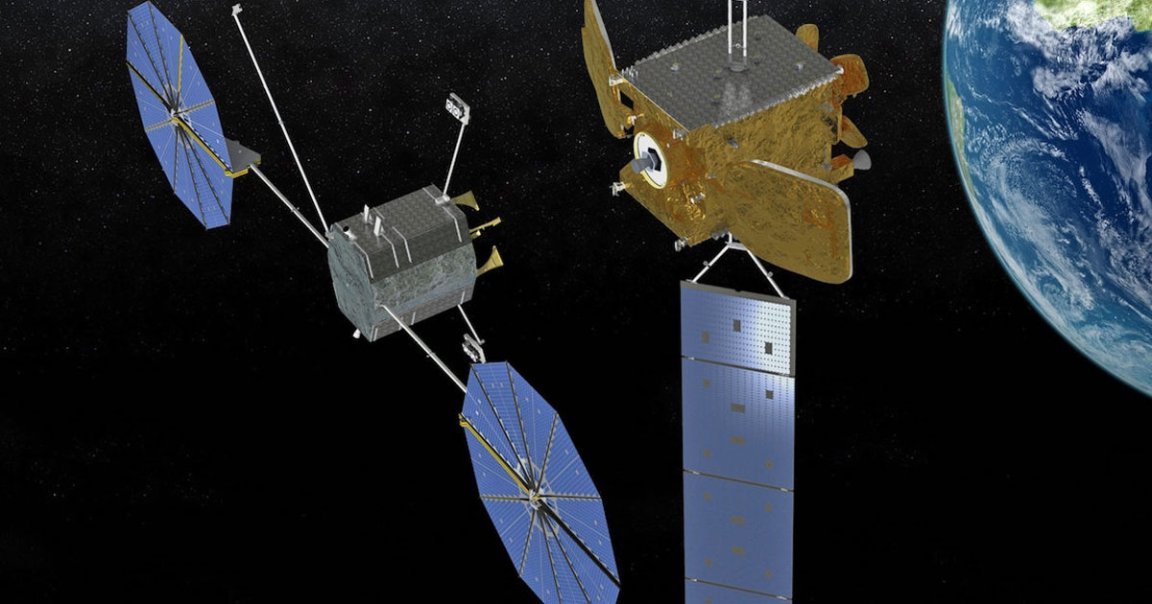
Life Extension
In February, Northrop Grumman’s “Mission Extension Vehicle-1” (MEV-1) docked with a 18 year old communications satellite — the first time a commercial spacecraft has docked to an orbiting satellite.
And on Saturday, the company successfully launched the satellite’s successor, MEV-2, atop an Ariane 5 rocket from the Guiana Space Center.
Both spacecraft are designed give ancient satellites a new lease on life by replacing their engines and refueling them, a process dubbed “satellite servicing.”
A New Orbit
In April, MEV-1 successfully nudged its target satellite Intelsat 901, from a “graveyard orbit” thousands of kilometers above Earth, back into a geosynchronous orbit, officially allowing it to function again.
The graveyard orbit is where satellites go when they’re retired. Geosynchronous orbit is far closer, relatively speaking, and allows satellites orbit while staying steady with the surface of the Earth.
MEV-2 will do something very similar. “MEV-2 is essentially a carbon copy of MEV-1 from a design standpoint,” Joe Anderson, vice president of operations and business development at Space Logistics, a Northrop Grumman subsidiary, told The Verge.
MEV-2
Apart from the design however, MEV-2 will be able to take things to the next level. It will attempt to dock to an actively functioning satellite called Intelsat 10-02 while in geosynchronous orbit — not a graveyard orbit.
It will then essentially take over the task of maintaining orbit, rather than moving its target satellite into a different orbit.
The company claims the disruption in communications caused will be less than 20 minutes.
Northrop Grumman is now focusing on its “Mission Robotic Vehicle” (MRV), a spacecraft that can carry out a variety different satellite repairs.
READ MORE: Northrop Grumman just launched its second satellite rescue mission [The Verge]
More on the spacecraft: World’s First: Spacecraft Docks to Commercial Satellite In Orbit